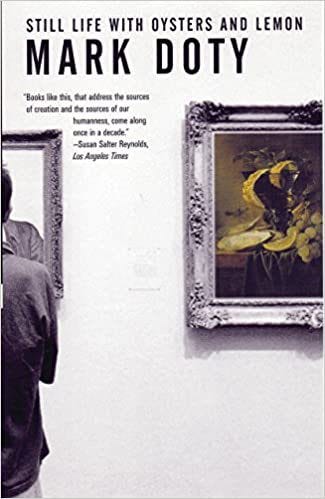I got COVID last week. Not badly, but still, it fairly knocked the stuffing out of me.
So I had a few days of not being able to do as much as usual, and my brain was fogged and sluggish. I found myself gazing out of the window a lot. So I’m returning to a pet subject of mine this week: looking.
Looking is fundamental to making art, whether that’s in the form of writing or visual art. Looking, cultivating a careful attentiveness, is the common thread that runs through my own work. It features in my reading too. It's subject I keep coming back to again and again.
As Tim Lilburn points out, looking is a kind of contemplative practice. Careful looking requires us to slow down and pay attention to something outside ourselves, something in the world that is irrefutably itself. But it also brings us back to ourselves in the here and now. It tears us away from our screens and the clamour of our overthinking minds. Jenny Odell argues that attentive looking is a political act, an act of resistance against an increasingly rapacious attention economy that seeks to capture and monetise our attention.
In his wonderful long essay Still Life with Oysters and Lemon: On Objects and Intimacy poet, essayist and memoirist Mark Doty captures in lucid and precise prose the silent eloquence of a Dutch still life painting he has just 'fallen in love with'.
Standing on the steps of New York's Metropolitan Museum on a sharp, cold day, he feels how his recent encounter with this small painting has changed him:
“I have felt the energy and life of the painting’s will; I have been held there, instructed. And the over-all effect, the result of looking and looking into its brimming surface as long as I could look, is love, by which I mean a sense of tenderness toward experience, of being held within an intimacy with the things of the world.”
He reflects on how the attentive looking that this still life painting asks of us both brings us back to ourselves and yet also dissolves that self:
“The eye suffuses what it sees with I. Not ‘I’ in the sense of my story, the particulars of my life, but ‘I’ as the quickest, subtlest thing we are: a moment of attention, an intimate engagement.”
He notices that there is something distilled and vibrant in the quality of attention itself and asks:
“Is that what soul or spirit is, then, the outwards-flying attention, the eye that binds us to the world?”
He considers the ‘I’ to be something less fixed than it might at first seem, as the eye moves over the world “...like a lover. And so the boundary of between self and world is elided, a bit, softened.”
The observing self is both here and not here, a paradox he sees as fundamental.
“That’s what it is to be human, I think, to be both someone and no one at once, to hold a particular identity in the world and yet to feel that solid set of ties also capable of dissolution, slipping away, as we become moments of attention.”
Still Life with a glass and oysters, Jan Davidsz de Heem, circa 1640. Oil on wood, 25.1 x 19.1 cm. Metropolitan Museum NY
Doty suggests that this elusive self, the seeing 'I', is to be found by looking outward as much as inward. And especially in the act of trying to communicate what has been seen.
“Say what you see and you experience yourself through your style of seeing and saying. Thus, the self is emptied out into things, and thus the things shine with astonishing life.”
He asks:
“What is it that such a clear-eyed vision of the particular wishes to convey? A way to live perhaps; a point of view, a stance toward things. Let me try to elaborate. First, a principle of attention, simply that. A faith that if we look and look we will be surpassed and we will be rewarded.”
Doty is suggesting here that attentiveness cultivates ‘a way to live’. An ethical project underlies this discipline of looking.
More like this?
One bruised apple: Or, how art stops time
One of the rich pleasures of working with my coaching clients is the conversations that develop, unhurriedly, in our written correspondence. These remind me how creative work is essentially collaborative, even if it might not seem so on the surface. Connecting with someone else’s creative world always sparks our own too, and working in complete isolatio…








This is such a beautiful and elegant appraisal of an idea, and I have yet to read the Doty - doing that now, but it also reminds me of Celia Hunt's work - and her definition of 'reflexivity' and how creative writing is inherently contradictory because it is deeply personal and yet it involves moving away from the self and becoming impersonal. As a writer we kind of move between the two - and I see a similar thing here in what you describe. Close attention transporting us to a deeper place in ourselves, where we become untethered to what is material.
This is what Celia Hunt writes about reflexivity ‘Reflexivity involves creating an internal space, distancing ourselves from ourselves, as it were, so that we are both ‘inside’ and ‘outside’ ourselves simultaneously and able to switch back and forth fluidly and playfully from one position to the other, giving ourselves up to the experience of ‘self as other’ whilst also retaining a grounding in our familiar sense of self.’